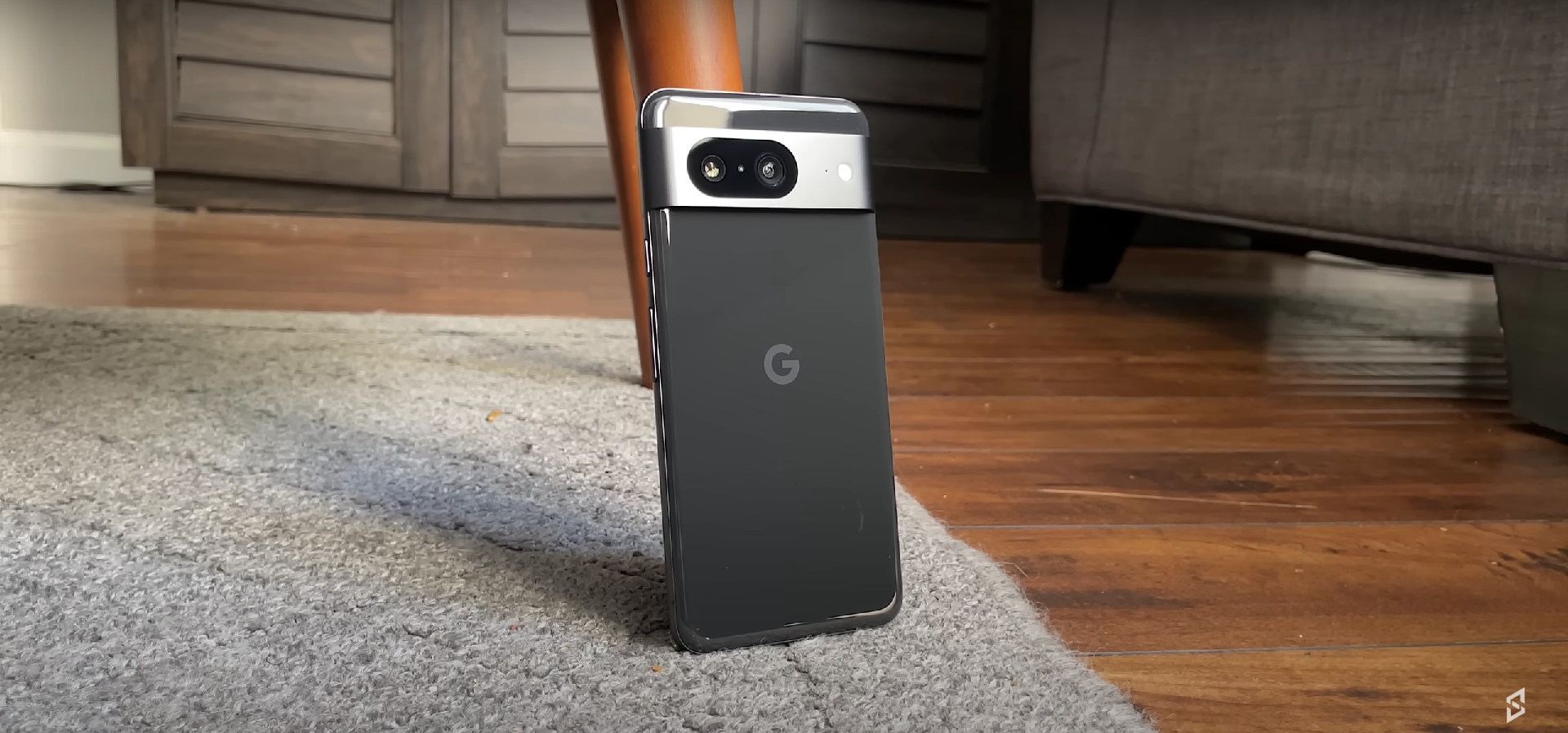The First Word
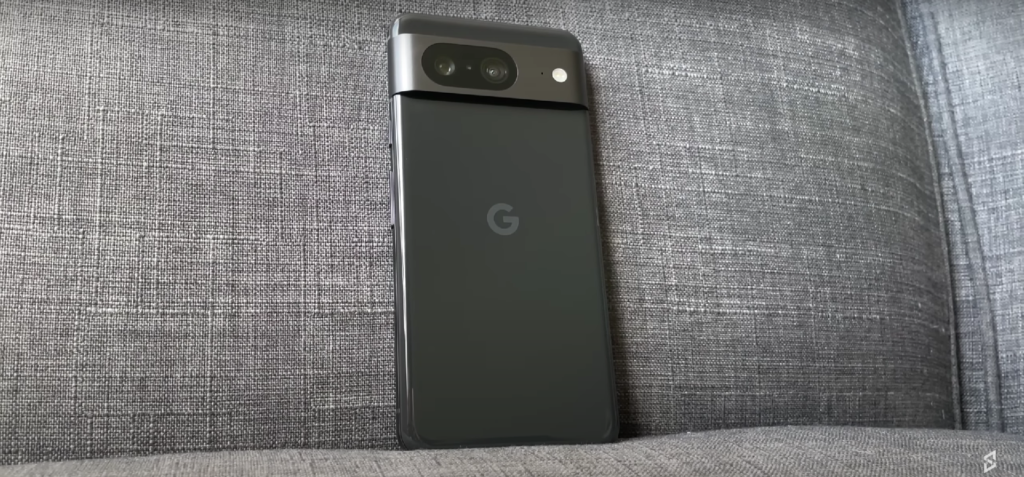
The insufficient performance, thermal problems, and plenty of software glitches in the Google Pixel 8 do not instill sufficient assurance to deem it a commendable update. In addition to these issues, Google’s after-sales service support in the nation is unreliable. Considering all these factors, I cannot endorse the smartphone to prospective consumers due to its lack of refinement and inadequate after-sales service, especially at its high price.
The Google Pixel 8 series has been released. Following the iPhone 15 debut just a few weeks prior, Google introduced the Google Pixel 8 series, which showcased impressive artificial intelligence capabilities. The Google Pixel 8 along with the Google Pixel 8 Pro include Google’s distinctive design, including a camera visor, as well as the latest Google Tensor G3 CPU and a plethora of intriguing AI-driven functionalities.
Indeed, the Google Pixel 8 series can be considered as a gradual improvement over the previous iterations of the Google Pixel series. Superficially, there appears to be little that is novel, however there have been enhancements. Over the last week, I have been utilizing the vanilla Google Pixel 8 as my main device, and this smartphone possesses numerous commendable features. This review will discuss the positive aspects of the Google Pixel 8, the negative aspects of the smartphone, and ultimately, whether it is worth investing Rs 75,999 on the new Google Pixel 8.
Review of the Google Pixel 8: Design
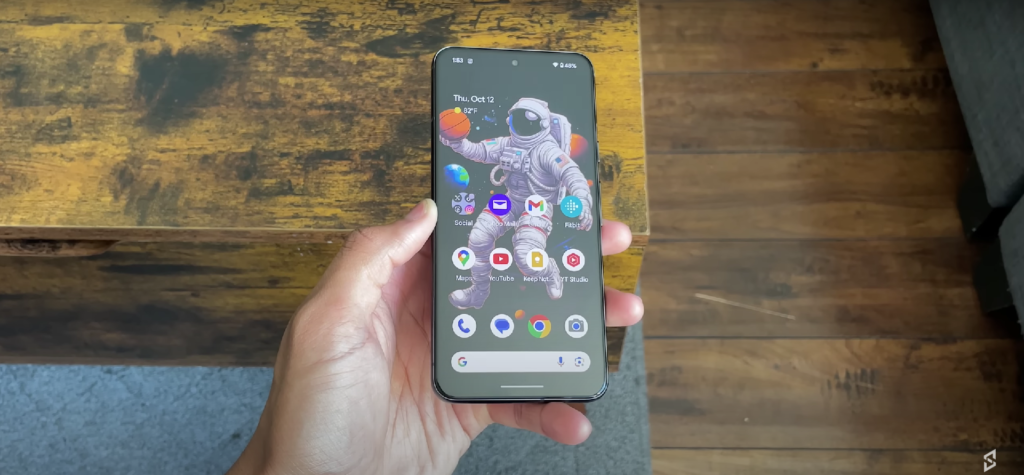
The Google Pixel 8 lacks significant innovations in terms of design. The smartphone bears a striking resemblance to its predecessor, with subtle modifications and adjustments scattered throughout. For instance, the current model of the pixel is more convenient than the previous year’s version. This may be attributed to the smartphone’s somewhat more rounded corners and the slightly smaller 6.2-inch OLED display, in contrast to the 6.3-inch panel found in last year’s Google Pixel 7.
In addition, the rear panel maintains a similar appearance, albeit it now features a variety of fresh hues. The camera visor on this smartphone is too thick, which is not an ideal design aspect. Indeed, the camera visor possesses an aesthetically pleasing appearance and imparts the Google Pixel series with a unique and recognizable identity. However, it also represents the most inconvenient aspect of this design.
It is not possible to lay your phone flat on any surface. Additionally, while using wireless chargers, you must position the smartphone in a manner that prevents the camera visor from coming into contact with the charger. This is because such contact causes the phone to tilt upwards, resulting in a gap between the wireless charger and the back panel of the Pixel 8. Poorly regarded. Fortunately, the vanilla Pixel 8 distinguishes itself from the Pixel 8 Pro by featuring a brushed aluminium finish on the visor, which provides a protective layer against scratches. However, it still maintains the same level of inconvenience.
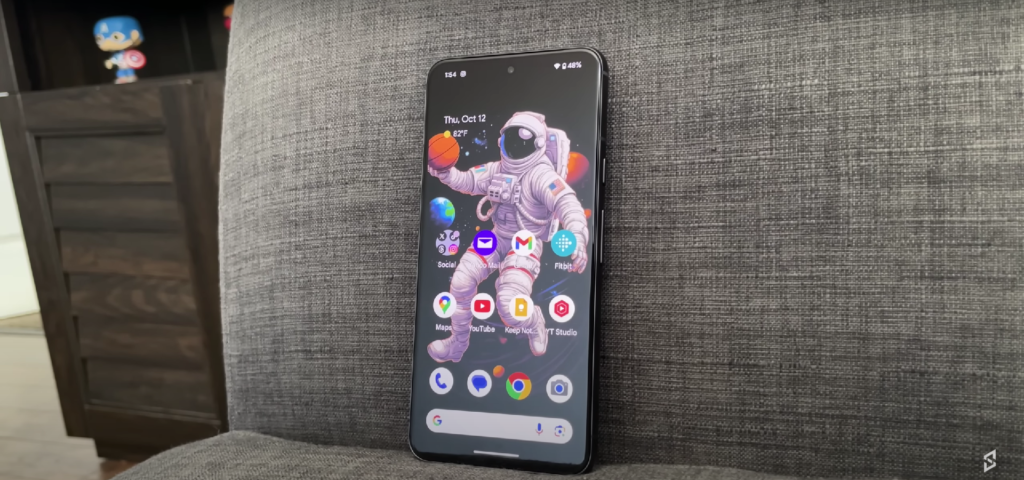
Initially, everything are straightforward and uncomplicated. The display features a curved design that wraps slightly around the edges. The most notable aspect of this year’s design is its luxurious appearance and tactile sensation, regardless of any potential inconveniences, as well as its dimensions. I have a strong affinity for this particular size, as it is exceptionally convenient to operate with a single hand and can be accommodated in any pocket. Prior to purchase, I utilized the Google Pixel 7 Pro as my main mobile device, and I find this size to be significantly more practical. Moreover, the inclusion of a glass back with Corning Gorilla Glass shielding and IP68 certification for water and dust resistance is highly desirable.
Review of Google Pixel 8: Display
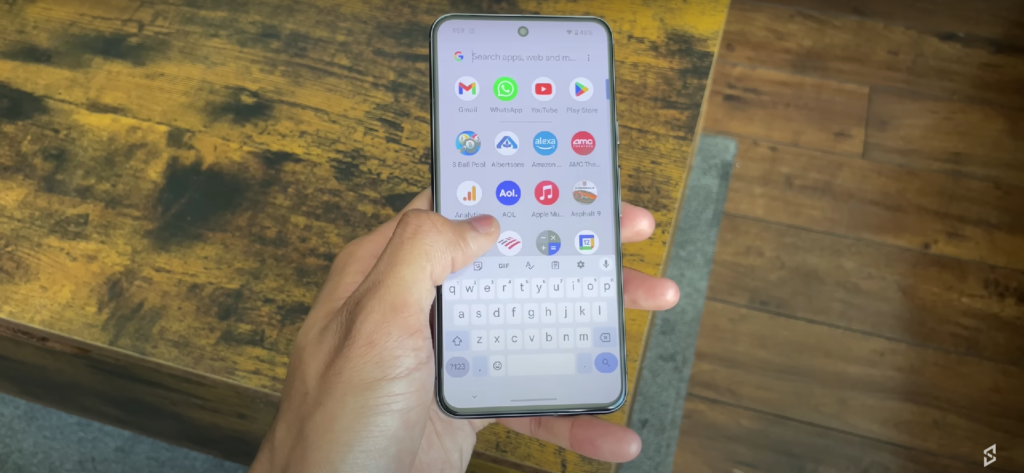
In terms of display, the Google Pixel 8 showcases significant enhancements, which left a strong impression on me. The smartphone’s display exhibits exceptional color accuracy, surpassing any other smartphone I have tried thus far. In addition, we are provided with an exceptionally luminous OLED display that can reach a maximum brightness of 2000 nits while in high brightness mode.
The current iteration of the vanilla Pixel 8 now boasts a 120Hz refresh rate, an improvement from the 90Hz on the previous year’s vanilla Pixel 7. This enhancement ensures a smoother scrolling and swiping experience. Additionally, we are provided with an adjustable refresh rate feature that dynamically adjusts the responsiveness of the display based on the information being shown.
The luminosity is likewise exceptional. The Google Pixel 8 boasts an exceptionally brilliant screen, surpassing most other Android smartphones with a peak brightness of 2000 nits. This level of brightness is only matched by the iPhone 15 Pro and iPhone 15 Pro Max, in addition to the Pixel 8 series. Using a Lux Meter in bright sunlight, I measured the Google Pixel 8’s maximum luminance to be 1863 nits. This places it among the greatest luminance levels I have observed in any smartphone, second only to the iPhone 15 Pro (review).
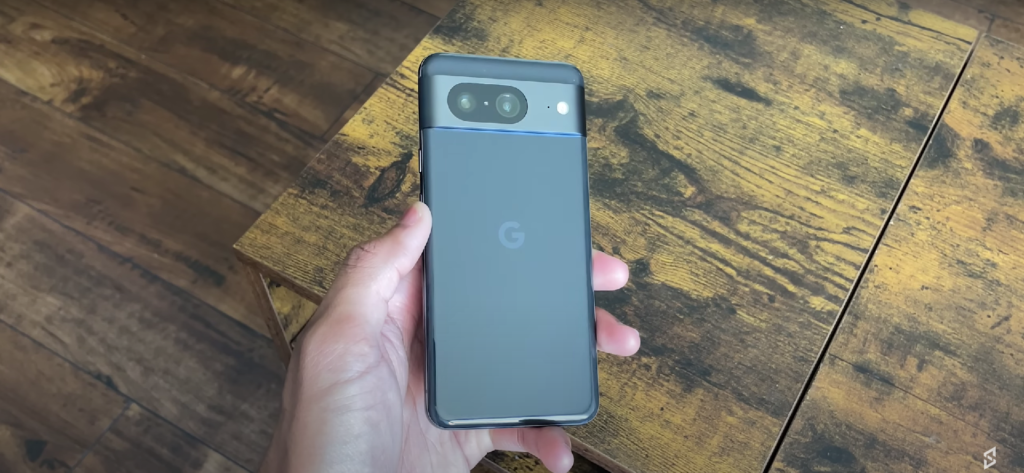
In addition to its exceptionally brilliant screen, the Google Pixel 8 also boasts one of the most precise and faithful color displays that I have evaluated on any mobile device. After subjecting this display to a color checker test, I was pleasantly astonished by the outcomes. The Google Pixel 8, when tested in the sRGB color space, exhibited exceptional color accuracy. The Google Pixel 8 boasts an exceptional display with an average DeltaE of 0.9, making it one of the most precise and accurate screens available.
A lower DeltaE value is seen as superior. A lower DeltaE value indicates a higher level of color accuracy, aligning with our perception of real-life colors. For smartphones, within the sRGB color space, a DeltaE value of 3 is deemed satisfactory, hence a DeltaE value of 0.9 is exceptionally close to perfection. The Google Pixel 8 demonstrated an exceptional maximum DeltaE of 2.8, above the typical performance.
Indeed, the enhanced screen of the Google Pixel 8 represents a significant advancement for this year’s Google Pixel 8 series. The 6.2-inch OLED panel is a standout feature this year. The device appears impressive and is on par with this year’s top-tier flagship models, such as the Apple iPhone 15 Pro and the Samsung Galaxy S23 Ultra. The Google Pixel 8 outperforms its two main competitors in some scenarios, making it one of the top smartphone screens available at now.
Review of Google Pixel 8: Performance
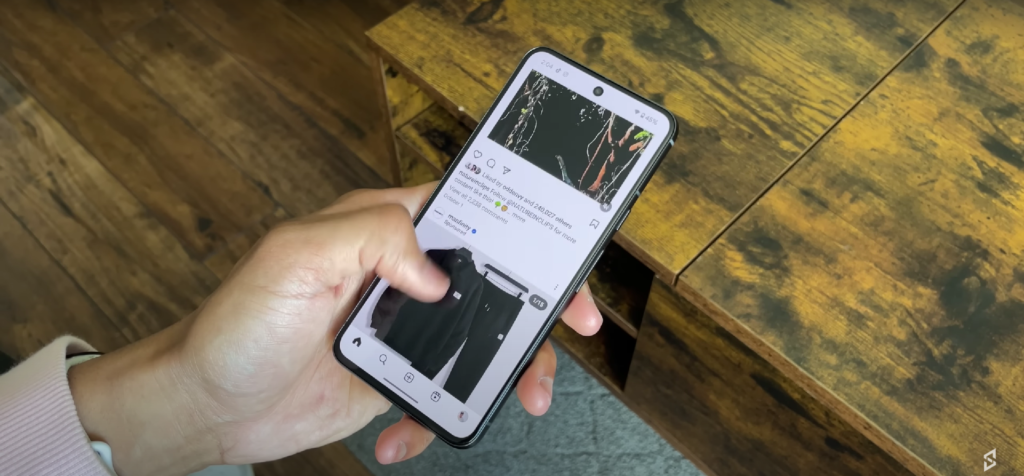
Although the display is satisfactory, the performance of the Pixel 8 is disappointing. The smartphone’s Tensor G3 chip offers just marginal improvements compared to the previous year’s Tensor G2 chip. The smartphone’s performance metrics do not match those of other flagship devices released this year. Additionally, the smartphone exhibits faults such as overheating and software-related glitches.
To begin with, let’s address the performance figures upfront. The Google Pixel 8 performed less favorably than its most formidable rivals, such as the iPhone 15 and the Samsung Galaxy S23, in simulated benchmarks. I conducted benchmark tests on the Google Pixel 8 using both CPU and GPU, and the results indicated much lower performance compared to other high-end smartphones released this year. Here is a comparison between the smartphone and its major rivals:
Now that we have addressed the benchmarks, let’s discuss more concerns regarding the Google Pixel 8. As with previous Pixel launches, the software does not have a seamless experience. Although there are no significant software glitches, it lacks the level of refinement desired. Occasionally, even simple tasks like as making phone calls might result in an unpleasant experience, particularly when frequently switching between using the earpiece and the speaker. In addition, I encountered a significant number of call drops when using the Google Pixel 8, which is particularly unexpected considering that making phone calls is arguably the most fundamental function of any mobile device.
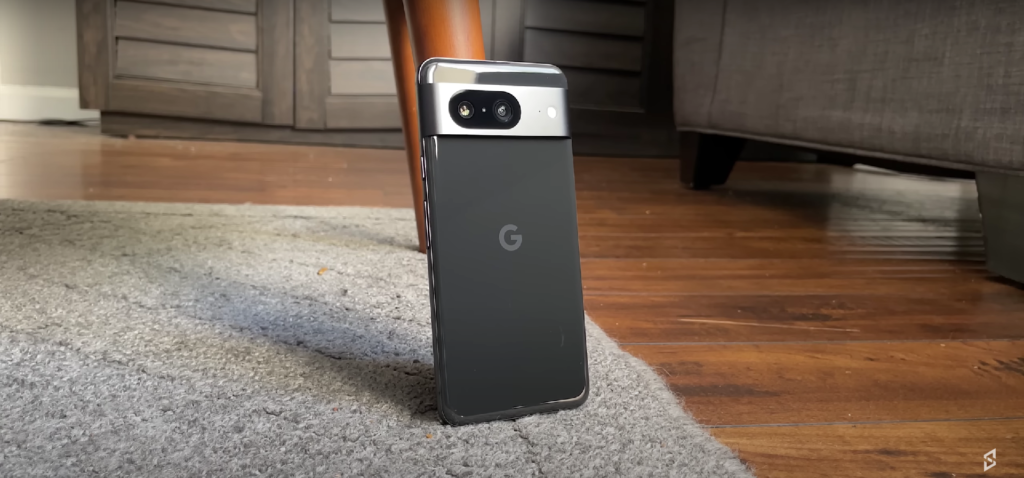
Furthermore, I encountered problems with the smartphone’s Bluetooth communication. When using Bluetooth earphones connected to my smartphone, there is a slight delay when switching between the headphones and the phone during calls. This delay might be bothersome, especially during essential calls. The process of connecting to Android Auto wirelessly is not smooth, as the smartphone frequently experiences intermittent disconnections. Although uncommon, this occurrence should not happen on a smartphone priced at Rs 75,999.
In addition, there are instances where applications have a delay in opening, the Google Pixel 8 has a prolonged boot time after shutting down, and I have encountered erratic behavior of the screen while casually reading around social media. In addition, the standby time of the Google Pixel 8 is really poor.
Furthermore, there is the exacerbating factor of the heating issue. Upon acquiring the Google Pixel 8, there was widespread discussion on the overheating problems associated with the iPhone 15 Pro models. However, once using the Pixel 8 for a few days, the iPhone’s heating problems were less severe.
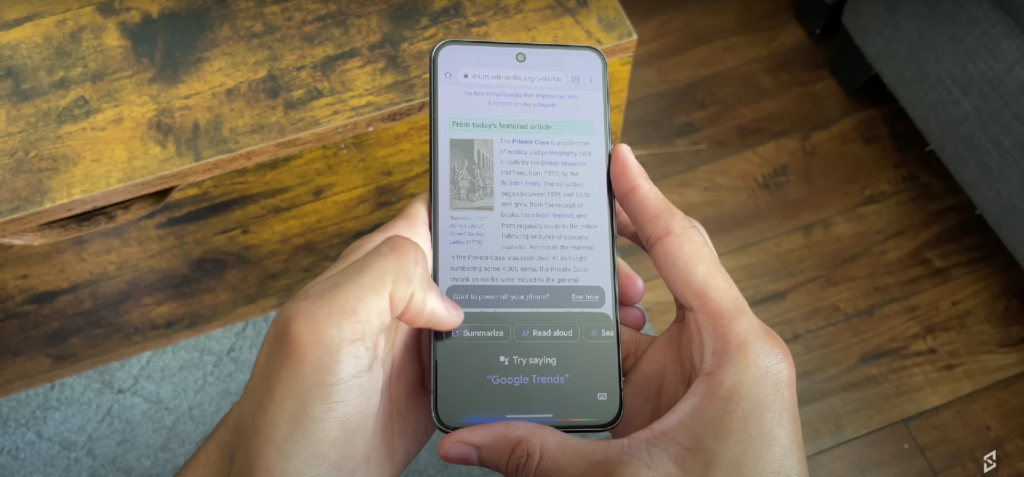
The AI capabilities of the Pixel 8 are likewise perplexing. On multiple occasions, the Pixel 8 prompts me unnecessarily to activate the live transcribe or live translate function. Even after selecting the cancel option, it still activates. Once more, an uncommon occurrence yet highly bothersome.
Overall, I found no significant speed improvements with the Google Pixel 8. No matter the level of power of the smartphone or the level of efficiency of the AI tools and features. Certain fundamental functionalities, such as Bluetooth connectivity and telephony, are experiencing problems. The smartphone exhibits significant thermal problems and has poor standby duration.
Review of the Google Pixel 8: Camera
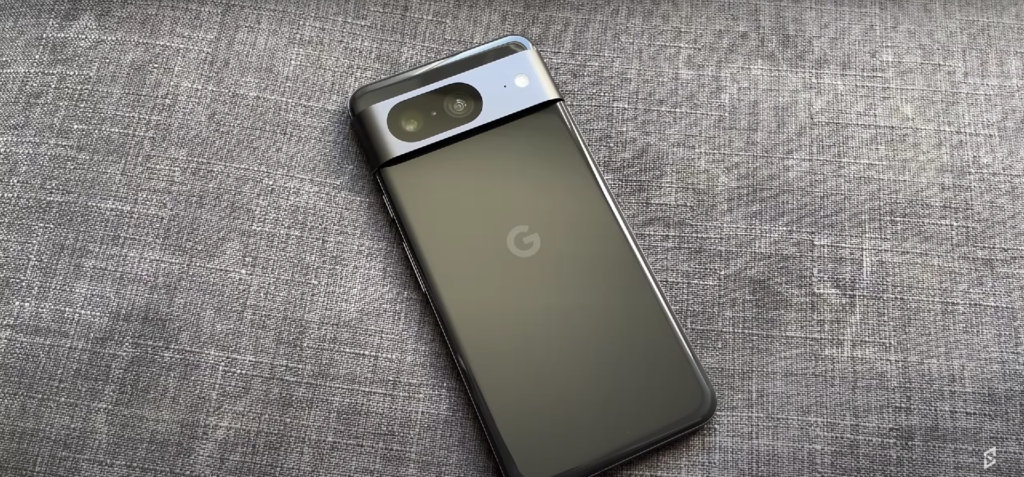
While the Pixel 8 may have shortcomings in terms of performance, it excels in the realm of camera capabilities. Prior to acquiring the Pixel 8, I had been utilizing the Google Pixel 7 Pro. Although the differences are not really substantial, the Google Pixel 8 offers enough noteworthy features to surpass its predecessor, the “Pro” edition from the previous year. This year, the device is equipped with a dual back camera configuration consisting of a 50-megapixel wide angle lens and a 12-megapixel wide angle shooter.
The camera on the Pixel 7 has been upgraded this year, including a wider aperture of f/1.7 compared to the previous model’s f/1.9 aperture. The primary shooter now has a resolution of 50 megapixels. The photographs produced by this camera, as one would anticipate from a Google Pixel, are exceptional. The details exhibit high definition, the photographs are precise and undoubtedly exude brilliant colors.
Once again, Google has excelled in the realm of photography with their latest camera technology. The shots may not appear optimal when seen via the camera’s viewfinder. However, once the image processing algorithm of Google is used, the resulting photos are quite impressive. In comparison to the Apple iPhone, the photographs appear slightly more saturated, a characteristic that is favored by many smartphone users. I genuinely appreciate the high resolution and vividness of the photographs displayed on this smartphone, as well as its ability to preserve intricate details. Google has significantly improved the performance of the 50-megapixel camera this time, resulting in a noticeable difference.
As usual, the primary camera produces consistent image quality when used with the wide angle lens. Additionally, being a Google Pixel, the portrait mode captures stunning photos. As I have often stated over the past few years, Pixel devices excel at capturing pictures. The portraits effectively preserve intricate skin details, exhibit excellent skin tone management, and boast the game’s most advanced edge recognition and background blur capabilities.
Combine these camera capabilities with Google’s advanced camera technology, and you have a clear winner! Google has made significant advancements in implementing artificial intelligence in the photography domain. One of the new features we receive is Best Take, which provides an effective and efficient method for enhancing group images in the future.
The AI Noise reduction feature effectively eliminates external noise from your videos, ensuring that ambient sounds do not interfere with the recording of someone speaking. Additionally, the Magic Editor tool enables you to manipulate and alter elements within a photo according to your preferences.
Additional characteristics exist. As an illustration, we have Google’s “Bokeh Video” which refers to the cinematic video capability found on the Pixel 8. In addition to modifying the exposure, we have the ability to modify the color tone and white balance of the images while capturing them.
Review of the Google Pixel 8: Battery Performance
Regarding the battery, the Google Pixel 8 is once again disappointing. The smartphone is equipped with a 4,575mAh battery that is capable of supporting 27W rapid charging. Although I managed to achieve a screen time of over five hours effortlessly on the Google Pixel 8, the battery’s reliability remains questionable.
First and foremost, let’s address the standby time, which is the most unfavorable aspect. The Google Pixel 8 exhibits one of the most inferior stand-by durations among all flagship devices. Occasionally, I retire to bed with my phone’s battery level exceeding 10 percent, only to discover the next morning that my smartphone has completely run out of power. Unsatisfactory. In the past, I have expressed similar criticisms regarding the unsatisfactory battery life of Samsung smartphones. However, after testing the Google Pixel 8, I have found that it performs at a comparable level to some of the Samsung phones I have evaluated this year, with the exception of the S23 FE, which I have not yet assessed.
In addition, the Google Pixel 8 effectively maintains its battery life throughout gameplay. During gameplay of Call of Duty Mobile at the maximum graphical settings, the smartphone had a battery depletion of approximately 4 percent within a span of 15 minutes, and approximately 10 percent within a 30-minute gaming session. This smartphone’s 4,575mAh battery is satisfactory.
Nevertheless, there are instances when the gadget depletes its battery at an accelerated rate. I have seen that GPS navigation significantly depletes the battery. The Google Pixel 8 had a battery depletion of about 10 percent throughout one hour of GPS navigation usage, and I observed a more rapid battery drain when the device became warmer. Indeed, GPS navigation significantly increases the temperature of the phone.
The charging process is likewise characterized by a sluggish pace. The device is equipped with a 27W rapid charging feature, which took approximately 2 hours and 20 minutes to fully charge the 4,575mAh battery from 0 to 100 percent. Overall, the battery performance of the Google Pixel 8 is disappointing, to say the least. The phone’s heating problems contribute significantly to battery depletion. However, the presence of Google AI, which analyzes user behavior to enhance battery optimization, may require more than a few weeks of usage to take effect. Nevertheless, I am currently unimpressed with the battery’s performance.
Final Judgment on Google Pixel 8 Review
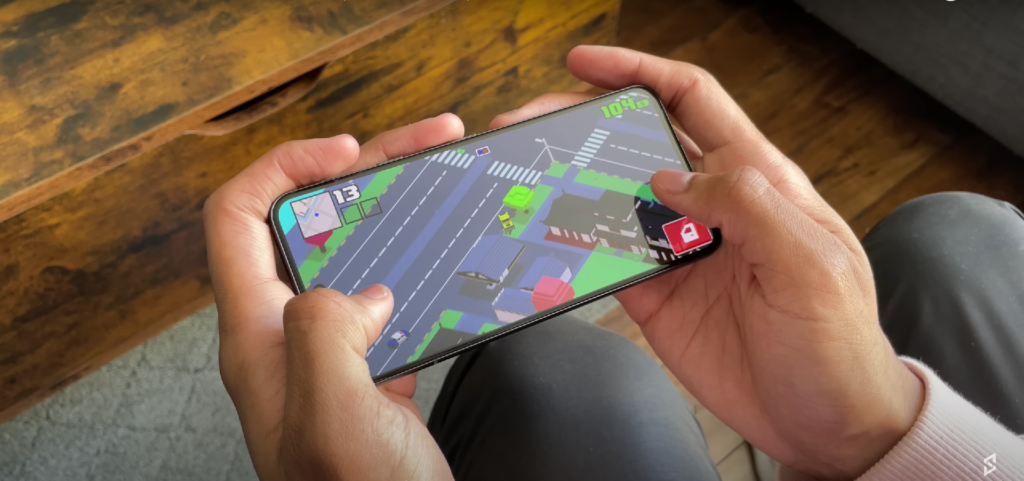
This concludes my evaluation of the Google Pixel 8. I must admit that one of the launches I was eagerly anticipating has proven to be somewhat underwhelming. Indeed, we receive novel AI tools and capabilities, while the camera of the Google Pixel maintains its exceptional quality, enhanced by new AI-based functionalities that add an extra level of appeal and profitability. Additionally, this year we will be receiving a display on the Pixel smartphone that is considered one of the finest we have ever encountered.
Nevertheless, the smartphone’s insufficient power, heating problems, and several software flaws undermine my trust in considering it a worthwhile upgrade. In addition to these factors, Google’s after-sales service support in the country is unreliable. Considering all these factors, I cannot endorse the smartphone to prospective consumers due to its lack of refinement and inadequate after-sales service, especially at its high price.
View this post on Instagram
